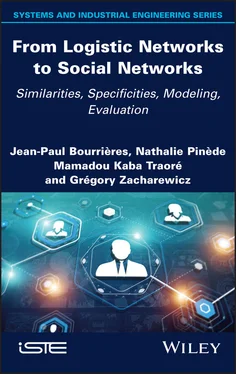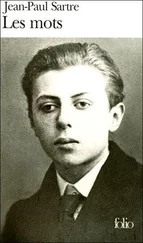1 Cover
2 Title Page Series Editor Jean-Paul Bourrières
3 Copyright First published 2022 in Great Britain and the United States by ISTE Ltd and John Wiley & Sons, Inc. Apart from any fair dealing for the purposes of research or private study, or criticism or review, as permitted under the Copyright, Designs and Patents Act 1988, this publication may only be reproduced, stored or transmitted, in any form or by any means, with the prior permission in writing of the publishers, or in the case of reprographic reproduction in accordance with the terms and licenses issued by the CLA. Enquiries concerning reproduction outside these terms should be sent to the publishers at the undermentioned address: ISTE Ltd 27-37 St George’s Road London SW19 4EU UK www.iste.co.uk John Wiley Sons, Inc 111 River Street Hoboken, NJ 07030 USA www.wiley.com © ISTE Ltd 2022 The rights of Jean-Paul Bourrières, Nathalie Pinède, Mamadou Kaba Traoré and Grégory Zacharewicz to be identified as the authors of this work have been asserted by them in accordance with the Copyright, Designs and Patents Act 1988. Any opinions, findings, and conclusions or recommendations expressed in this material are those of the author(s), contributor(s) or editor(s) and do not necessarily reflect the views of ISTE Group. Library of Congress Control Number: 2022931615 British Library Cataloguing-in-Publication Data A CIP record for this book is available from the British Library ISBN 978-1-78630-657-9
4 Foreword
5 Introduction
6 PART 1: Network Variety and Modeling 1 Network Typology
1.1. Introduction 1.2. The principal networks
1.3. Characterization and typology of networks
1.4. Engineering issues
1.5. Performance indicators, evaluation, optimization
1.6. Conclusion
2 Modeling Discrete Flow Networks
2.1. Introduction 2.2. Structure
2.3. Characterization of a discrete flow
2.4. Activities
2.5. Control system
2.6. Resources
2.7. Fluid kinematics
2.8. Formalisms for modeling flows in a network
2.9. Multi-modeling
2.10. Conclusion
7 PART 2: Network Analysis Methods and Applications 3 Exact Methods Applied to the Flow Analysis of Topological Networks
3.1. Introduction 3.2. Additive flow networks – deterministic modeling by flow networks
3.3. Additive flow networks – stochastic modeling by queuing networks
3.4. Synchronized flow networks – modeling by timed event graphs
3.5. Conclusion
4 Simulation Techniques Applied to the Analysis of Sociological Networks
4.1. Introduction 4.2. Simulation techniques
4.3. Simulation of flows in sociological networks
4.4. Conclusion
8 PART 3: Case Studies 5 Smart Grid
5.1. Summary of the study
5.2. Demand profile
5.3. Solar power station, fuel station and regional import
5.4. Hydroelectric power station and PHES
5.5. Operational issues
5.6. Model
5.7. Optimization results
6 Forestry Logistics
6.1. Summary of the study
6.2. Forest timber supply problem
6.3. Tactical planning model
6.4. Logistics benchmarking
6.5. Conclusion
7 Multi-layered Digital Social Networks
7.1. Summary of the study
7.2. Digital social networks
7.3. Studying digital social networks via an interview broadcast
7.4. Modeling and simulation
7.5. Simulation results
7.6. Conclusion and perspectives
9 References
10 Index
11 End User License Agreement
1 IntroductionTable I.1. Required reading
2 Chapter 1Table 1.1. Typology of material flow networks. For a color version of this table...Table 1.2. Typology of information flow networks. Fora color version of this tab...Table 1.3. Network engineering issues. For a color version of this table, see ww...
3 Chapter 2Table 2.1. Classes of discrete flow networksTable 2.2. Distribution function of the random variable δ (exponential model)Table 2.3. Activities implemented in discrete flow networksTable 2.4. Referencing a flow entity (general description)Table 2.5. Network resourcesTable 2.6. Special features of the model shown in Figure 2.8Table 2.7. Network modeling formalisms and their limitationsTable 2.8. Diffusion modes of an element circulating in a multi-layer network
4 Chapter 3Table 3.1. State and event graphs (Petri net formalism). For a color version of ...Table 3.2. Capacities of cuts for graph  Table 3.3. Performance indicators based on the arrival rate λ (λ < λ M)Table 3.4. Description of elementary circuits
Table 3.3. Performance indicators based on the arrival rate λ (λ < λ M)Table 3.4. Description of elementary circuits
5 Chapter 4Table 4.1. Algorithm for the rootTable 4.2. Algorithm for a simulator (in charge of an atomic model)Table 4.3. Algorithm for a coordinator (coupled model)
6 Chapter 5Table 5.1. Data sheet. Case study: Smart Grid
7 Chapter 6Table 6.1. Data sheet. Case study: forestry logistics
8 Chapter 7Table 7.1. Data sheet. Case study: digital multi-layered social networks
1 Chapter 1Figure 1.1. Ways of including users in a network. For a color version of this fi...Figure 1.2. Example of ILP. For a color version of this figure, see www.iste.co....Figure 1.3. Example of a quadratic program. For a color version of this figure, ...
2 Chapter2 Figure 2.1. Closed network versus open network. For a color version of this figu...Figure 2.2. Observation of a discrete flow in a pathway. For a color version of ...Figure 2.3. Birth and death of flow entities within the network. For a color ver...Figure 2.4. Controlling an activity. For a color version of this figure, see www...Figure 2.5. Synchronization of a transformation activity. Petri net modeling. Fo...Figure 2.6. Convergence/divergence in the AND-type model. For a color version of...Figure 2.7. Convergence/divergence in the OR-type model. For a color version of ...Figure 2.8. Synchronization of a multi-capacity resource. For a color version of...Figure 2.9. Linear resource association. For a color version of this figure, see...Figure 2.10. Flow networks. Combinations of edges in series and in parallel. For...Figure 2.11. Modeling an active resource with a Markovian station. For a color v...Figure 2.12. Metamodel (in UML) of a multiple modelFigure 2.13. A dynamic system and its environmentFigure 2.14. Coupled model and its hierarchical structureFigure 2.15. Example of a three-layered social network. For a color version of t...
3 Chapter 3Figure 3.1. The problem of maximum flow in an additive flow network. For a color...Figure 3.2. Two-terminal series–parallel graph with maximum flow. For a color ve...Figure 3.3. Maximum flow, load rate, capacity balancing. For a color version of ...Figure 3.4. Determination of the maximum flow by searching for minimum cuts. For...Figure 3.5. Example of a Jackson networkFigure 3.6. Timed event graph without external conditionsFigure 3.7. Steady state in a timed event graph with no external conditions. For...Figure 3.8. Flow-shop workshop. For a color version of this figure, see www.iste...Figure 3.9. Flow-shop model using a timed event graph. For a color version of th...Figure 3.10. Average flow-shop production frequency according to the number of p...
4 Chapter 4Figure 4.1. Modeling paradigms for simulation. For a color version of this figur...Figure 4.2. DEVS model dynamicsFigure 4.3. DEVS model hierarchy and simulation protocolFigure 4.4. Coupling simulation/resolutive method diagramFigure 4.5. Implementation of coupling simulation /resolving methodsFigure 4.6. Two-federated high-level architecture. For a color version of this f...Figure 4.7. FMU structure and components. For a color version of this figure, se...Figure 4.8. Example of HLA and FMI/FMU coupling (Gorecki et al. 2020). For a col...Figure 4.9. DEVS model of reception/integration/distribution of an agent (Bouana...Figure 4.10. MSN from the professional network. For a color version of this figu...Figure 4.11. Distributed simulation of MSN (HLA architecture). For a color versi...
Читать дальше

 Table 3.3. Performance indicators based on the arrival rate λ (λ < λ M)Table 3.4. Description of elementary circuits
Table 3.3. Performance indicators based on the arrival rate λ (λ < λ M)Table 3.4. Description of elementary circuits










